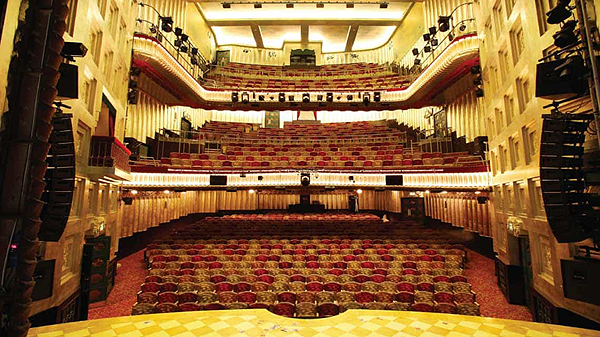This is a
very large area, which includes several places described in previous articles
in this series: Marylebone,
New Scotland Yard (both old and new), and Leicester Square. But throughout the world, the West End is mostly synonymous with Theatreland,
that is, the theatre area, which mainly occupies the neighbourhood of Covent
Garden. So much so that the terminology “West End theatre” exists to
define the practice of professional theatre in London, which, together with
Broadway theatre in New York, represents the pinnacle of global Anglophone
commercial theatre.
More
generally, the West End is the hub of London entertainment, given the high
concentration of theatres, but also cinemas, restaurants and pubs, where you
eat, drink, and listen to live music.
West End was also the first name of the British duo Pet Show Boys, who later dedicated the famous song “West End Girls” to this area.
Among the
many theatres in the West End is the Savoy Theatre (see photo of the interior of the
theatre, taken from WestendTheatre.com), located in Savoy Court, an alley
which merges into Strand, the latter is one of the most famous streets
in London, which starting from Trafalgar Square reaches the edge of the City.
You can get there easily on foot from Charing Cross Tube station or
Embankment Tube station.
Today’s
Savoy Theatre has the peculiarity of being built below street level, and
the hotel of the same name is located above it. Like most London theatres, it
develops above all in height, with two circles overlooking the stalls (in
total it comprises 1158 seats), reducing the distance between spectators and
stage to a minimum, and favouring the enjoyment of the show. Having been
there in person in 2008, to see the musical “Never Forget”, based on the
songs of Take That, I can confirm it!
The site of
the Savoy Theatre, however, has a history of reconstruction and renovation that
dates back well before 1881, when it first opened. Previously, that same
site had had a very different intended use.
In 1246 the
Savoy Palace was built there for Peter, the Earl of Richmond, who had
been granted the land by King Henry III. Also, the title of Earl of Richmond had
been granted by the king to Count Peter of Savoy, uncle of his wife
(Eleanor of Provence), and the name Savoy which has survived to the present day
derives from him.
Nothing
remained of that building in the first Savoy theatre, as it was burned down in
1831. Subsequently, a hospital was built on its ruins (1505) until the
latter was also destroyed by fire. Only in 1881 would it become a theatre.
Since then
its interior was completely rebuilt in 1929, while its subsequent
renovation, begun in 1990, suffered a setback due to yet another fire.
The last reopening dates back to 1993, in its current form, with which
they tried as much as possible to reproduce its original structure.
The
performances nowadays are always musicals, some repeated for several
years in a row. You can purchase tickets directly from the official website of the theatre, but through some online agencies
you can often find discounted prices, which allow you to attend beautiful shows
with a limited expense.
The West End
often appears in the Detective Eric
Shaw Trilogy,
however it only has a crucial role in the last book of the series, “Beyond
the Limit”, in which we see DI Miriam Leroux and Sergeant Mills driving
on the Strand, and we find another important character in Covent Garden
Market (but I will talk about this in the next article in the series), but
above all this area is literally the scene of a crime, which is
committed precisely in the Savoy packed with spectators.
In reality, the crime would take place on a day (on 22 May 2017) in which there was no performance, but this too is nothing more than one of my many artistic licences.



No comments:
Post a Comment